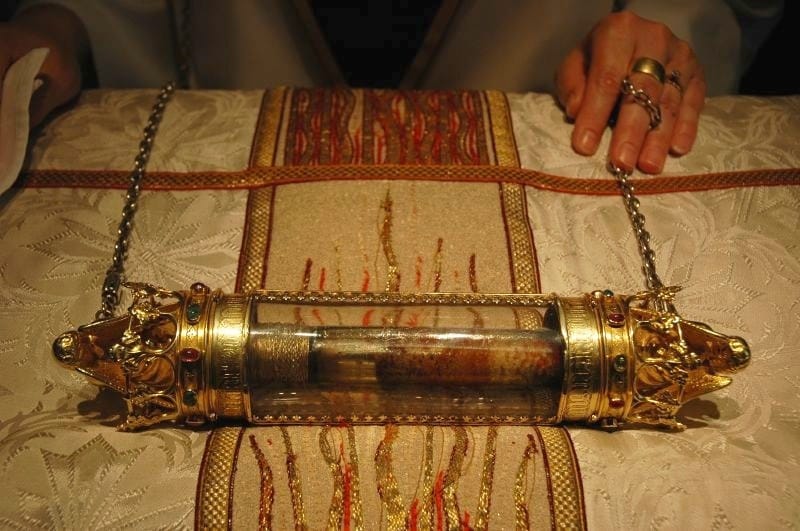
It's Saturday, February 10, 2024.
Today’s edition covers the increase of self-managed abortions in states where abortion is said to be banned, a get-out-the-vote campaign by leftwing religious leaders, the obsession with relics in the Middle Ages, and much more.
“I myself am satisfied about you, my brothers, that you yourselves are full of goodness, filled with all knowledge, and able to instruct one another” (Romans 15:14). — May we, too, be filled with all knowledge.
Of Christian Concern
REPORT: IN THE STATES WHERE ABORTION IS BANNED, IT ISN’T

A recent report from the Foundation to Abolish Abortion (FAA) estimates that the 14 states where abortion is “supposedly banned” have seen steep increases in self-managed abortions since the overturn of Roe v. Wade. Notably, “self-managed abortion (SMA) remains legal for women in all 50 states, including those that claim to have banned abortion.”
Roe v. Wade was overturned by the Dobbs decision on June 24, 2022, causing big changes to abortion laws in “Republican-controlled states.” Unfortunately, since self-managed abortions are not reported to state or federal agencies, estimating the numbers is challenging. However, there is some data from other sources, and those are what FAA’s report relies on.
Based on July-August 2022 data, FAA estimates there may have been 50,768 abortions in a 12-month period in the 12 states that had already implemented “bans” by August 2022. Those states are Alabama, Arizona, Arkansas, Kentucky, Louisiana, Mississippi, Missouri, Oklahoma, South Dakota, Texas, West Virginia, and Wisconsin.
However, there is reason to believe that figure is low. “Around one year after the Dobbs decision,” Aid Access (the “single largest provider” of self-managed abortion pills) self-reported “a 270% increase since July-August 2022 in average daily pill requests across the U.S.” Accounting for Aid Access’s estimated market share, that increase would mean the number of abortions “over a 12-month period from June 18, 2023 through June 17, 2024” in the now 14 states with supposed bans (add Idaho and North Dakota) may have been 93,996.
The report concludes: “While this more recent data is less certain, the trend is nonetheless clear. Self-managed abortion in states with ‘bans’ is a growing problem, increasingly blunting any effect the ‘bans’ may have had in curbing the supply of abortion in these states. These numbers confirm that, because no states’ laws are considered to prohibit self-managed abortion, babies in all 50 states remain essentially unprotected from abortion.”
Also Noteworthy

Left: Rev. Dr. William Barber II (photo: Knightopia / CC BY-SA 4.0 DEED). Right: Rev. Dr. Liz Theoharis (photo: Stephen Pavey).
→ Leftwing “religious and civil rights leaders,” led by Rev. Dr. William Barber II and Rev. Dr. Liz Theoharis, “have launched a 30-state campaign” to “mobilize over 15 million poor and low-income voters ahead of the 2024 election.” The campaign supports “healthcare for all, affordable housing, a $15 minimum wage and fully-funded public education.”
→ A Chinese congregation called Shenzhen Holy Reformed Church has found refuge at First Baptist Church in Midland (Texas) after fleeing “persecution and harassment in China more than three years ago.” Denied asylum in South Korea, and denied renewal of tourist visas in Thailand, the group of believers was finally granted asylum in the United States. Their long journey for freedom has earned them the nickname “the Mayflower Church.”
→ A Montana family says they lost custody of their daughter after opposing her gender transition. She has reportedly been moved to Canada without their consent.
→ New York mother Jennifer Vitsaxaki is suing the Skaneateles Central School District and Board of Education for “socially transitioning” her daughter without her consent.
→ Givelify’s 2024 Giving In Faith Report reveals, among other trends, that “digital giving is the new norm” for believers, with “faith leaders” reporting that “60% of congregations' total annual contributions” in 2023 were through “mobile and online giving.”
→ The creators of VEGGIETALES have announced a LarryBoy feature film coming 2026—which calls to mind this Babylon Bee article from a few years ago.
Content Catch-Up
Recent, notable content by Christian creators, or of Christian interest.*

Screenshot of George Janko on his podcast, censor added. (George Janko / YouTube)
→ The Sin of Swearing: In a dynamic exchange, popular podcaster George Janko, an outspoken Christian, was challenged on his habit of swearing by the hosts of the podcast Girls Gone Bible. (Video — notice: some strong language)
→ 7 Things Christians Shouldn’t Post: Christian YouTuber Allen Parr lists seven types of social media posts that he says Christians should stop making. (Video)
→ Veneration of Mary Is Worse Than You Think: Adding to the number of Protestant voices on X who have been commenting recently against the veneration of Mary, former Catholic Tim Kauffman gives a detailed explanation of why Marian devotion is “much, much worse than you think.” (Thread)
*Not necessarily an endorsement
Church History Tidbit
The Relic Craze of the Middle Ages

Relic of the Holy Blood, Basilica of the Holy Blood, Bruges, Belgium. (Matt Hopkins / CC BY-SA 2.0 DEE)
Relics, in “Christian usage,” can be defined as “the material remains of a saint after his death, as well as…the sacred objects that have been in contact with his body.” These supposedly holy objects include such things as fragments of Christ’s cross, vials of His blood, the apostle John’s sandal, Mary Magdalene’s finger, John the Baptist’s head, and the like.
In the Middle Ages, people loved relics. “The acquisition of relics and the pilgrimages to the shrines in which they were displayed were two of the major activities of the medieval Church,” according to folklorist Wilfrid Bonser.
Bonser writes that, at first, “the bodies of saints and holy men were conserved by their friends and followers as objects to be revered and cherished”—not worshipped, but honored. This seems to have been the case with the body of Ignatius, a disciple of John who was famously martyred for the faith in the second century.
But relic worship began, it seems, after Christianity became the state religion of the Roman Empire in the fourth century. Relics were sought out for two reasons: first, they were alleged to have healing powers, and second, they were thought to be able “to secure a personal contact with a saint,” to better request his or her intercession or some other spiritual benefit.
Relics became a temptation for monasteries to seek prestige and wealth, as possessing an important relic would inevitably attract religious devotees and their money. The Second Council of Nicaea in 787, Bonser says, decreed that no church should be established without the placing of relics. “This necessitated the fabrication of a relic if no genuine article was to be had. The papal decree that relics have the power of reproducing themselves did much to relieve the situation: it also accounts for the multiplicity of the limbs of the same saint to be found, and for the great number of the fragments of the True Cross.”
Still, “many vain attempts were made” by some in the Catholic Church to fight against fraud. The problem was that “true relics, stolen relics, disputed relics, and even facsimiles of relics continued to work miracles.”
This state of affairs drew criticism by some. French abbot Gilbert de Cogent (1053—c. 1122) wrote, “Sometimes one and the same saint is claimed by two different churches: e.g., the clergy of Constantinople claim to possess the head of John Baptist, yet the monks of Angers maintain the same claim. Do both these bodies of clergy believe him to have been two-headed?”
Famously, years later, the great reformer Martin Luther (1483-1546) denounced the entire thing: "What lies there are about relics! One claims to have a feather from the wing of the angel Gabriel, and the Bishop of Mainz has a flame from Moses’ burning bush. And how does it happen that eighteen apostles are buried in Germany when Christ had only twelve?"
While these Medieval practices may seem ridiculous, even laughable, to the modern Protestant mind, their historical reality presents a challenging question: are there are any baseless superstitions or unbiblical traditions that we blindly believe or practice today, that we have inherited and accepted uncritically?
What did you think of today’s briefing?


Know someone who would enjoy this?Please SHARE this newsletter




Have some feedback for me? Reply to this email with comments or suggestions. I’d love to hear from you!
Why "18:15"? The name Project 18:15 is based on Proverbs 18:15: “An intelligent heart acquires knowledge, and the ear of the wise seeks knowledge.” The aim is for this weekly email—a Christian news briefing, a Bible study, and a Church history lesson rolled into one—to be one way you keep abreast of current events and acquire knowledge you might not acquire elsewhere.
Unless otherwise indicated, all Scripture quotations are from The ESV® Bible (The Holy Bible, English Standard Version®), copyright © 2001 by Crossway, a publishing ministry of Good News Publishers. Used by permission. All rights reserved.

Copyright (C) " target="_blank">unsubscribe
